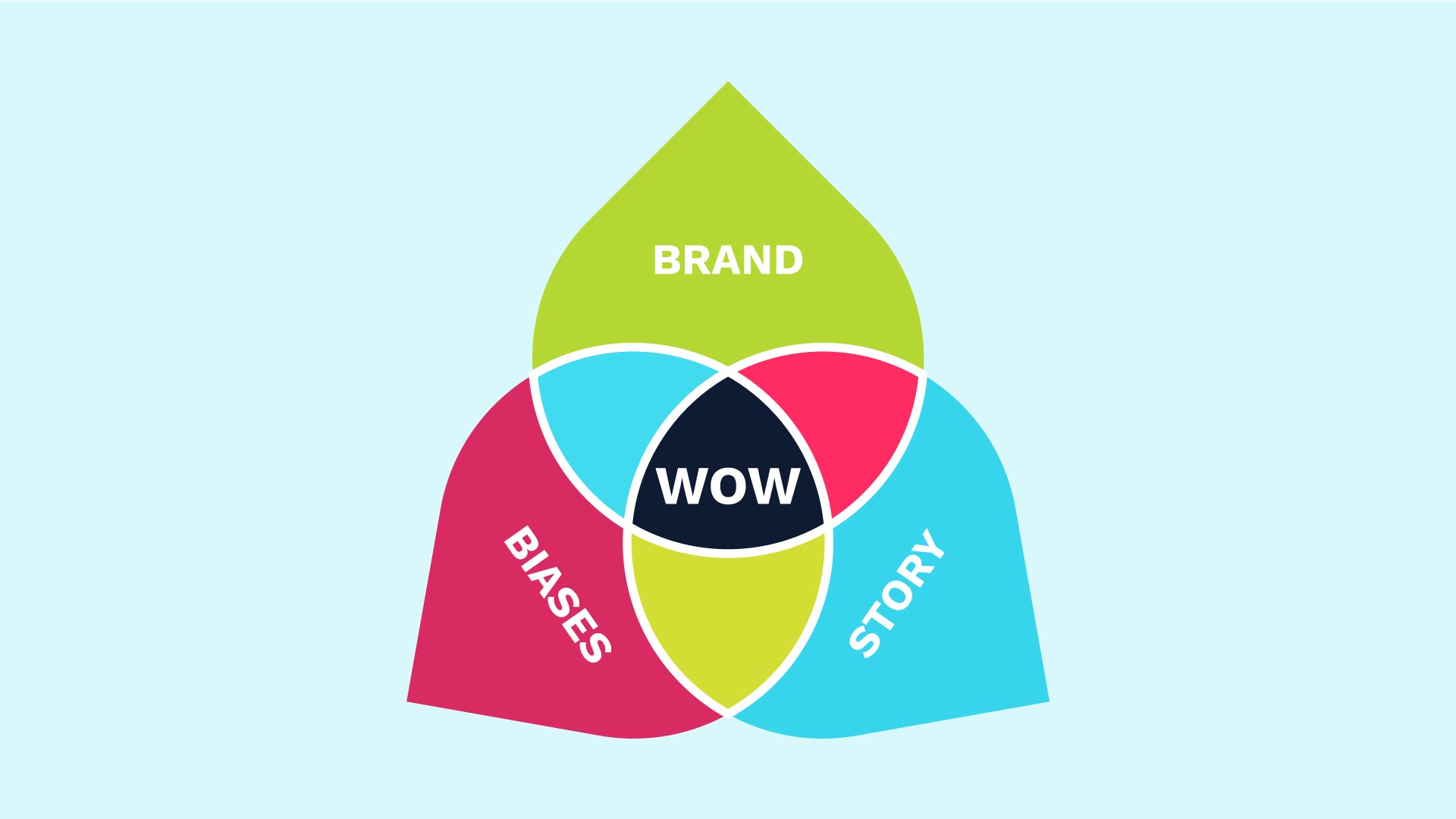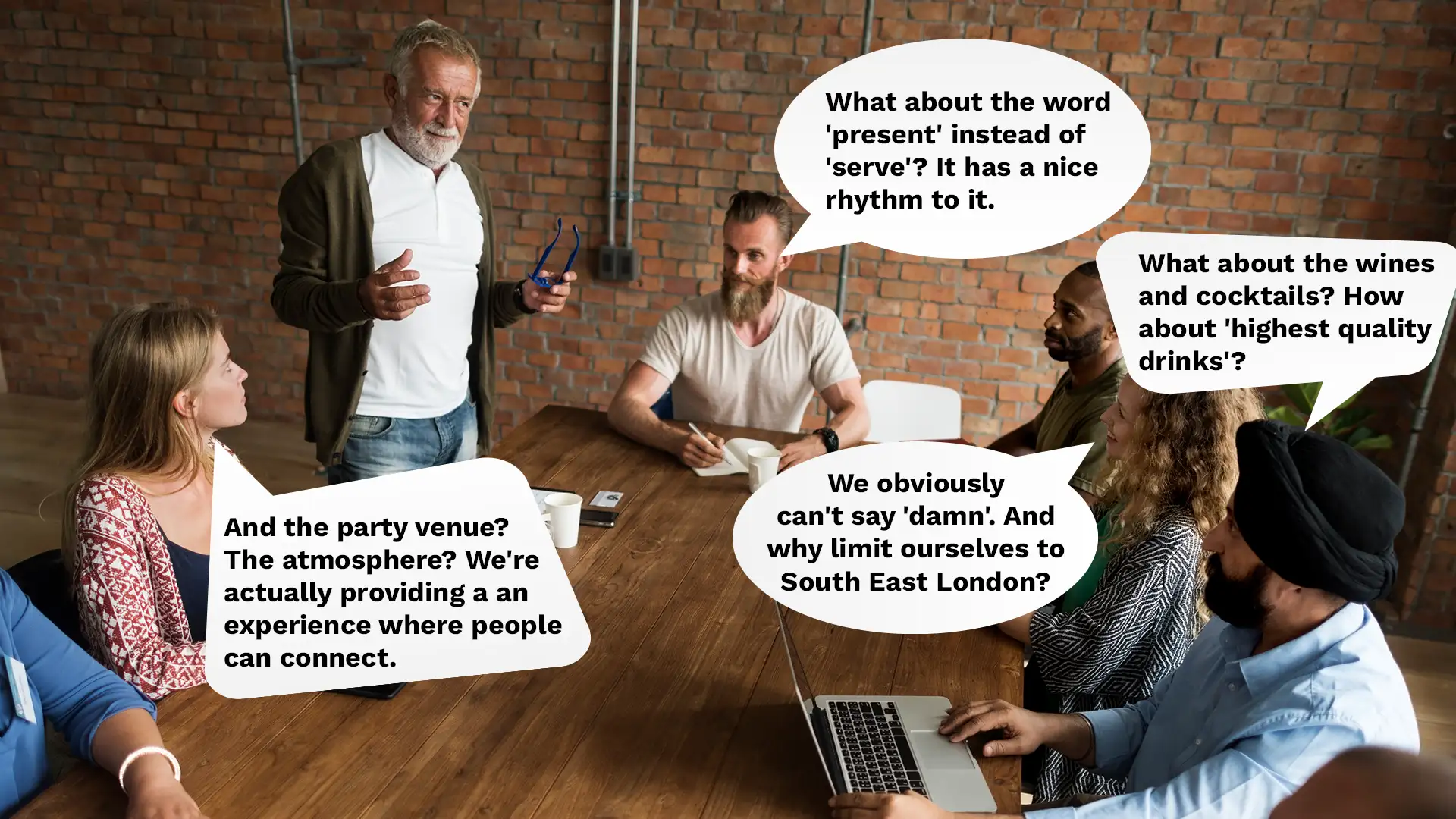What separates outstanding B2B marketers from good B2B marketers?
They’re creative and judicious enough to understand the company’s audience, brand and personality, and make decisions based on this.
They’re gritty and collaborative. They can all build influential relationships with various stakeholders in an organisation.
They’re an avid (un)learner. As markets shift, buyer groups grow, and innovation cycles pedal on, B2B marketers can’t sit still or rely on what they already know.
Yes to all of these. But ultimately it’s all about their ability to create an argument and narrative that makes sense to your audience.
Whether you are marketing network infrastructure or security software, you are in the business of persuasion. You win if you manage to convince someone to try a better way.
No arguing with that. Let’s break it down even further.
The anatomy of a great B2B marketing argument
Convincing is about building an airtight case for doing something that humans hate doing: changing their behaviour. Telling a narrative that gives a memorable, compelling, human shape to an inescapable conclusion:
“You need to buy this, now.”
But the rational argument became the bedrock of B2B marketing long ago. Any B2B content agency that knows what they’re doing is now saying:
“Put the product capability comparison list DOWN for a minute, and tell me a STORY.”
Building a rational argument isn’t a problem. People are paying lip service to the importance of brand voice, even if they’re not boldly applying it. Storytelling is still an uphill struggle for many B2B tech companies, but the engines are now running.
The missing thing that binds a salient story together? That no one is talking about? The reason why logical, beautiful B2B story arcs can still fall flat?
Cognitive bias.

How brand, story, and bias relate
Imagine an ‘accessible’ B2B brand that makes people’s lives easier through blending two solutions into one. Their product gives you the best of both worlds (mixture of solution 1 and 2). Like a beautiful and technically advanced analytics tool.
The story goes like this:
- Businesses used to have to choose between 1 and 2
- 1 would get you [a] benefits
- While 2 would get you [b] benefits
- But what if you could have the benefits of 1 and 2, in one?
- Meet 3 – the only way to get [a] and [b] together in one place.
The bias, meanwhile, is less decision-making by thinking, and more by instinct.
When you create this story, applying bias is when you highlight the fact that ‘3,000 other businesses like theirs have chosen solution 3’. Or to support a benefit, you say that ‘if you don’t get [a] and [b] together, you miss out on [insert cool thing they care about]’.
This appeals to our tendency to follow our peers (social proof), or to avoid losing out (loss aversion).
It has to make logical sense, yes. But the way the argument is made should also tap into our cognitive dispositions, and inclinations.
Because cognitive bias is the subconscious basis of human judgement, decision-making, and behaviour.
Cognitive biases in B2B content
People aren’t always rational, even when buying security software. Stories help us remember, retell, and relate to information. Behavioural science says so. Creating a distinctive brand voice also helps us feel an affinity with a software company.
But behavioural science also tells us so much more about how we can make great content shine brighter, and actually work.
More often, we bucket behavioural science principles with digital and growth marketing. But particularly in the start-up world, where content marketers often wear multiple content-adjacent hats, applying these principles can help nudge decision-makers down-funnel in clear, tried-and-tested ways that a brilliantly structured story and brand voice simply can’t do alone.
Applying cognitive bias in creative work can be the connective tissue between plot points, it can accelerate an argument, and can mean the difference between indecision and action.
Somewhere along the way, the B2B marketing world seems to have forgotten where tools like social proof and authority bias originally came from. So they miss some of the other super valuable psychological biases that everyone in business should know about and take advantage of. And they also miss the recent scientific research that can add credibility to otherwise opinion-based creative decisions.
Let’s wordsmith this thing… Together



Why capitalising on biases in B2B marketing is both ethical and effective
Doesn’t that make me a manipulative marketer? You may ask.
Let’s consider an example.
You go out for a few drinks with your team after work. It’s late, so you call an Uber.
You pay by credit card, and after fumbling with the card machine it prompts you to make a tip: 20%, 25%, or 30% are the suggested amounts or you have the option to add your own figure. Unsure, you go for 25%.
You’re not alone in picking the middle option. Many experiments have shown that this is the most popular choice. Since people fear being profligate or mean, they avoid the extremes.
Faced with a set of products, we tend to choose the one in the middle, or the option pre-chosen for us.
The ‘centre stage effect’ can all be used in various areas of content marketing and creative, from presenting a selection of creative concepts to stakeholders, through to reframing different perspectives or alternate realities in an article.
You could argue that this kind of nudging is too powerful to be left in the hands of marketers. Or that it lacks transparency. And people have made both of these arguments.
But nudges aren’t occult or magic. ‘Powerful’ implies that your audience is foolish, and they can be beguiled into a particular course of action.
Biases never sway everyone, all the time. They just increase the probability that communications have the desired effect through an understanding of how the mind works.
Every piece of communication is also selective. Imagine if that taxi had given you every option, a 1% tip, a 2% tip, a 3% tip, and so on.
The complexity would be bewildering.

Behavioural science as a B2B creative differentiator
Standing out against a slew of average content is becoming increasingly difficult. B2B Decision-Making Units are continuing to grow as the pace of innovation speeds up.
This means everyone’s attention is splintered, and every piece of content needs an extra push to be relatable and memorable.
Behavioural science principles aren’t the be all and end all. They’re not a magic wand to fix a mismatched narrative, or a bland, poorly thought-out brand identity.
But missing these tricks from your B2B content toolkit might just be the downfall of your otherwise-amazing campaign.
Ask yourself how you made your choice from the image above
